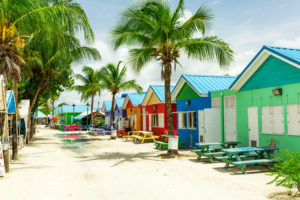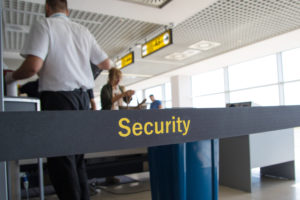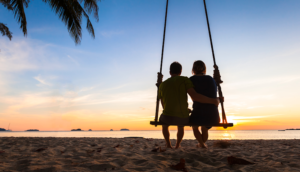Colombia beautifully captures the vibrant spirit of South America. It is lively with friendly people, upbeat music, and a diverse landscape. In short, it is everything a traveler might look for in an expedition to our Southern counterpart.
However, due to its turbulent past, Colombia has earned a reputation for vice and danger that keeps many weary travelers at a distance.
Having lived in Colombia for a year, I can safely say this reputation belongs firmly in the past. I explored Colombia day and night, and often took night buses without ever feeling in danger. The Colombia of today is an enchanting place, and it’s Caribbean coast makes for an ideal, saburosa get-away.
Cartagena
My first thought upon arriving in Cartagena was that I had walked into a movie set. It was hard to believe that a place could be so beautifully picturesque. There are flowers spilling out of brightly colored houses and women selling overripe mango on every corner. Loud salsa music clangs through the streets and children play soccer in shaded alleys (beware: temperatures reach up to 105 degrees with generous humidity).
All this has recently made Cartagena a hot-spot, not to mention that JetBlue now flies directly from New York City to Cartagena for as little as $400 round-trip. Thankfully the city’s popular historic center remains largely exempt by a franchise-takeover— locals are more likely to cool down with an ice-pop from the artisanal La Paletteria than a Starbucks Frappuccino.
Another big plus of Cartagena is that it attracts tourists of all budgets, which makes restaurants and accommodations of all prices easy to find. For budget hostels, El Viajero is a good choice with its location in the historic center, air-conditioning in dorm rooms, and social atmosphere. On the other hand, there is no shortage of luxury hotels. I loved Hotel Armeria, located in the more bohemian Getsemani district with a gorgeous rooftop pool. For food, you can dine on delicious cheese-filled arepas for less than a dollar or treat yourself to food cooked by some of the world’s top chefs (try Restaurant Alma—by far the best food I tried in Colombia).
Colombians know, love, and revel in good rumba, or nightlife. It is not uncommon to continue the party through the night and well into the morning, no matter your age or budget. I was often teased for trying to leave a dance party too early at 6 in the morning. If this suits your fancy, head to Plaza Trinidad in Getsemani, where bohemian travellers and locals enjoy Costeña beers or Aguardiente, the local liquor, drank straight from the bottle. Afterwards head to Café Havana, where salsa music plays all night. Brave souls can try to bust a move on the dance floor, but I was content sipping on my michilada, a beer with lemon and salt, and watch the Colombians go.
Isla Grande
With its stifling temperatures, a beach break is necessary in Cartagena. Luckily gorgeous beaches are not far. Most tourists go to Playa Blanca, a crowded but beautiful beach an hour boat ride away (costs hover around $15 USD). There, you can rent a cabana for the day or stay overnight in one of the many hostels. However, the beach can get very crowded and be prepared for vendors selling food and trinkets to pester you every few minutes.
Eager to find a more tranquilo beach, I followed the advice of a local friend and went instead to Isla Grande, an island only reachable by boat. Isla Grande is the largest island of the Islas Rosarios archipelago, and hosts only a small handful of hotels. I stayed at Las Palmas Eco-Hotel, a tiny cluster of bungalows run by Doña Rosa, a lovely local woman with a knack for serving up delicious fried fish and patacones, a double-fried plantain used like bread. She will also organize snorkel tours and night visits to the bioluminescent lagoon on the island. The lagoon, called Laguna Encantada, is filled with microscopic plankton that light up at every movement and are only visible at night. Swimming through the twinkling Laguna Encantada is an absolute must-do, and was far and away one of the most memorable moments I had in my year living in Colombia.
Tayrona National Park and Santa Marta
Colombia has a total of 58 National Parks, but with its white sand beaches, dense jungle, and beach-camping, Parque Tayrona is by far the most popular. It doesn’t hurt that it’s only a five-hour bus ride from Cartagena. Your hostel or hotel will likely be able to organize your ride over, as it is a popular backpacker destination. I paid 40.000 Colombian Pesos (about $13 USD) for an air-conditioned van, though if you are looking for the cheaper and more local option, just head to the Terminal de Transporte in Cartagena and get on the next bus to Santa Marta.
The cities of Santa Marta and Taganga act as mid-way points for those entering Parque Tayrona. Both sit the ocean—though the water leaves something to be desired—and offer cheap accommodation (try La Tortuga Hostal in Santa Marta and Casa Del Felipe in Tayrona). If you are looking to continue the rumba, there is a great little open-air discoteca, aptly named El Mirador, that overlooks the Taganga Bay and blasts Enrique Iglesias hits all night long.
The truly spectacular beaches are all within Parque Tayrona. Most popular amongst backpackers is the beach of Cabo San Juan, whose vibe can vary from that of a European music festival to a peaceful get-away, depending on the season. There, you can rent a hammock or tent and order some surprisingly good, but overpriced, food from a small restaurant. For quieter spots year-round, check out La Piscina, which attracts a more family-oriented crowd. No matter where you go, waking up on the sandy beaches of Parque Tayrona will ensure you a postcard-worthy memory of Colombia.





